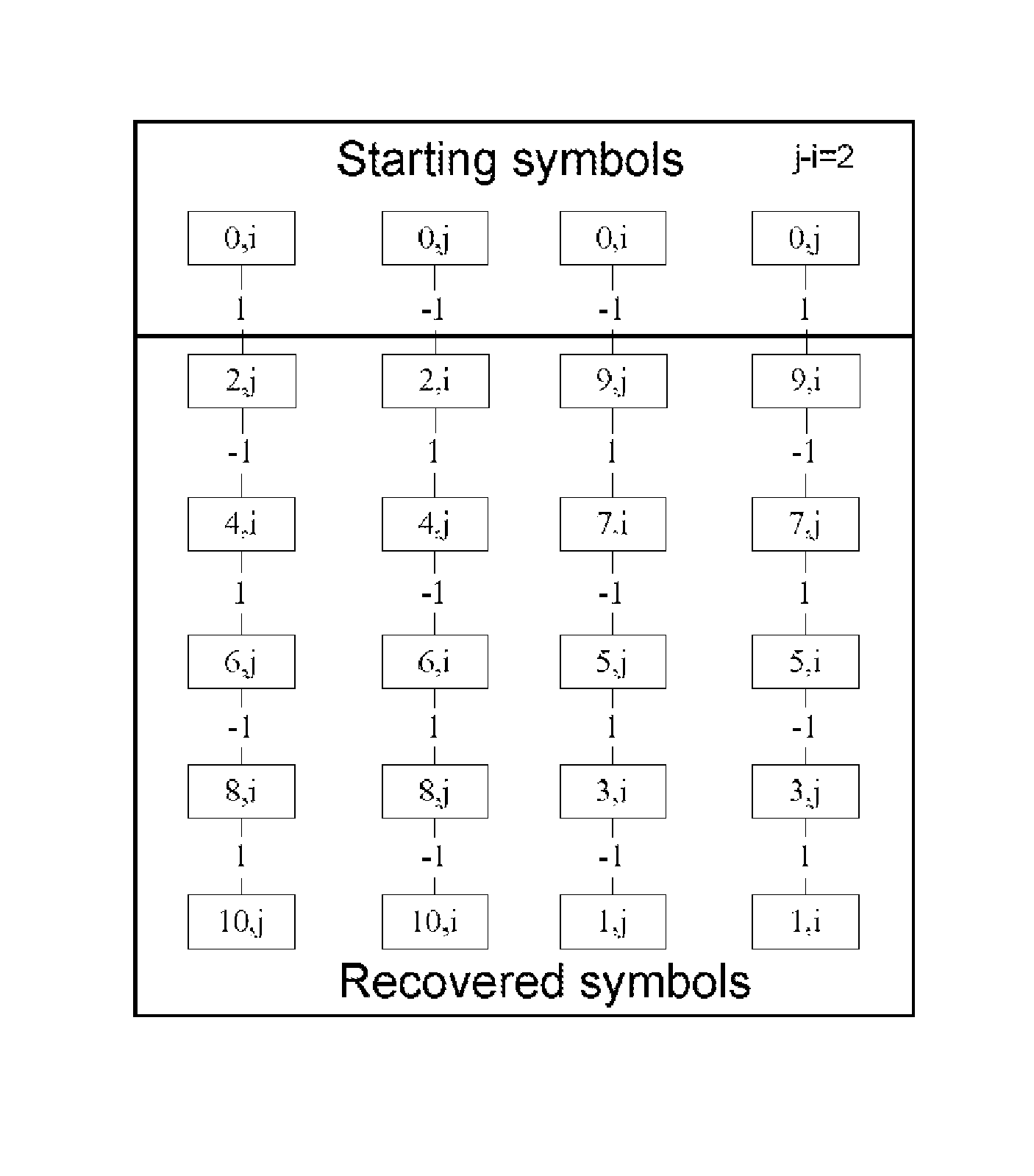System and method for efficient horizontal maximum distance separable raid
a separable raid and horizontal maximum distance technology, applied in error detection/correction, instruments, coding, etc., can solve the problems of inapplicability of all non-mds codes and vertical codes, the single-parity raid level is as vulnerable to data loss, and the rebuild takes longer. , to achieve the effect of improving the performance of the decoding algorithm and speeding up the decoding speed
- Summary
- Abstract
- Description
- Claims
- Application Information
AI Technical Summary
Benefits of technology
Problems solved by technology
Method used
Image
Examples
example 1
[0150]As shown in FIG. 4, let n=5, and r=2, the information symbols can be represented as d0, d1, d2, d3, d4, the redundant symbols are represented as c0 and c1. There are two chains: d0d1d2d3d4d5c0 and d0d1d2d3d4c1. If any two symbols are lost, the information symbols can be reconstructed, it is called optimal erasure code or MDS code. Otherwise, it is non-optimal erasure code.
[0151]If the beginning five symbols of output codes are d0d1d2d3d4, it is a systematic code, otherwise it is a non-systematic code. Since each information symbol contributes to two parity symbols, the update complexity / out-degree is 2. Since each parity symbols is connected to five information symbols, the in-degree is 5. The storage efficiency is 5 / 7.
[0152]If the encoding and decoding method can be described explicitly using an equation, for example, the c0 is the XOR of all information symbols (see FIG. 4A), it is regular structure code; otherwise, it is non-regular. If more parity symbols can be added to t...
example 2
[0189]Suppose n=5, m=2, n−m=3, then starting from 0, seq1 is {2, 4, 1, 3}; and seq2 is {3, 1, 4, 2};
[0190]Lemma 3. For two sequences, seq1=k×m mod n, seq2=k×(n−m) mod n, where 1≦k≦n−1, m=j−i, n is a prime number, if they run with the same speed each sequence will cover the first half of the entire data set when they encounter (overlap). The union of the first half of the seq1 and seq2 is equal to seq1 or seq2 without repeating.
[0191]Proof:
[0192]According to Lemma 2, sequence 2 is merely the reverse of sequence 1. That is, seq2k=seq1(n−k). Then the traces of sequences 1 and 2 can be seen as the trace of two points in one sequence moving towards each other from the opposite end. Since the number of sequence 1 or 2 is n−1, which is even and the speed is the same, then both points can cover the equal distance (the half of the sequence) when they encounter.
[0193]Assume the first halves of sequence 1 and sequence 2 are seq1k and seq2k, where 1≦k≦(n−1) / 2. Then n−(n−1) / 2=(n+1) / 2k=seq1(n−k),...
PUM
 Login to View More
Login to View More Abstract
Description
Claims
Application Information
 Login to View More
Login to View More - R&D
- Intellectual Property
- Life Sciences
- Materials
- Tech Scout
- Unparalleled Data Quality
- Higher Quality Content
- 60% Fewer Hallucinations
Browse by: Latest US Patents, China's latest patents, Technical Efficacy Thesaurus, Application Domain, Technology Topic, Popular Technical Reports.
© 2025 PatSnap. All rights reserved.Legal|Privacy policy|Modern Slavery Act Transparency Statement|Sitemap|About US| Contact US: help@patsnap.com



